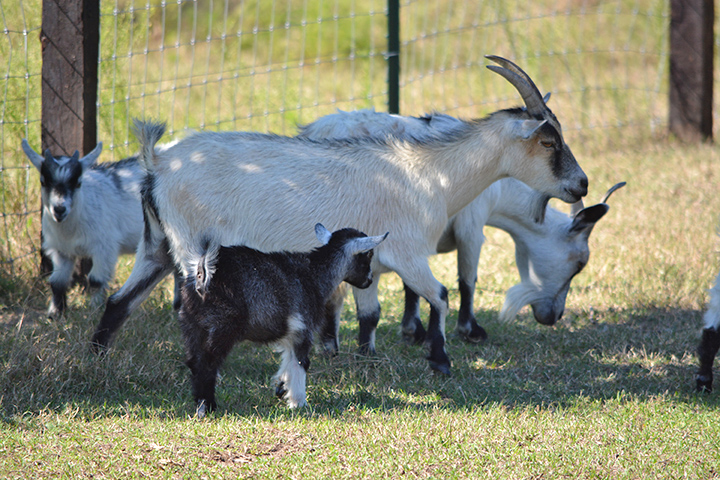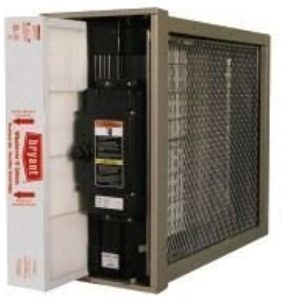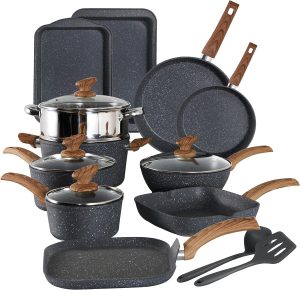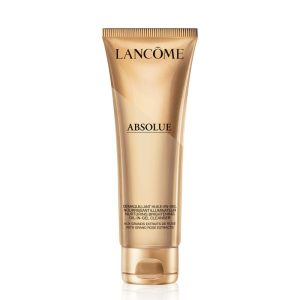Contents
- Benefits Of Using Pvc Feeders For Goats
- How To Choose The Right Pvc Feeder For Your Goats
- Setting Up Pvc Feeders For Maximum Efficiency
- Diy Pvc Feeder Ideas For Goats
- Maintenance And Cleaning Tips For Pvc Feeders
- Common Issues With Pvc Feeders And How To Troubleshoot
- Other Factors To Consider For Goat Feeding Efficiency
- Frequently Asked Questions Of Pvc Feeders For Goats
- Conclusion
PVC feeders for goats are practical and efficient solutions for providing feed to goats. They are durable and easy to clean, making them ideal for both small and large-scale goat operations.
With their sturdy construction, PVC feeders can withstand the physical demands of goats while ensuring minimal wastage of feed. These feeders can be easily mounted on walls or fences, allowing goats to access their feed comfortably. Additionally, PVC feeders can be customized to accommodate different types of feed, including hay, grain, or pellets, providing flexibility for goat owners.
Overall, PVC feeders offer convenience, durability, and cost-effectiveness, making them an excellent choice for feeding goats efficiently.
Benefits Of Using Pvc Feeders For Goats
PVC feeders for goats offer numerous advantages, including durability, easy cleaning, and resistance to weather conditions. These feeders provide a hygienic and efficient way to feed goats, ensuring their health and well-being.
Durability and longevity:
- PVC feeders are exceptionally durable and long-lasting, making them an ideal investment for goat owners. Their sturdy construction allows them to withstand the constant use and rough treatment from goats, ensuring they remain intact for an extended period.
- The durability of PVC feeders eliminates the need for frequent replacements, saving you both time and money in the long run.
- These feeders are resistant to weather conditions and do not rust or corrode, further enhancing their longevity.
Cost-effective and easy to maintain:
- PVC feeders are a cost-effective option, especially when compared to traditional materials like wood or metal. Their affordability allows goat owners to set up multiple feeders without breaking the bank.
- Maintenance is hassle-free with PVC feeders. They do not require regular painting or sealing like wooden feeders, saving you both time and effort.
- Cleaning PVC feeders is a breeze. They are smooth and non-porous, making it easy to remove any feed residue, preventing the buildup of mold or bacteria.
Improved feed hygiene and reduced waste:
- PVC feeders contribute to improved feed hygiene by keeping the feed clean and free from contaminants. The non-porous surface of PVC prevents the absorption of moisture, making it less susceptible to mold and mildew growth.
- These feeders are designed to minimize feed waste. The slatted design prevents goats from scattering or trampling the feed, reducing spillage and overall feed consumption.
- By reducing feed waste, PVC feeders help maximize your feed resources, leading to more efficient utilization and cost savings.
PVC feeders offer numerous benefits for goat owners. Their durability and longevity ensure they can withstand the demands of goat feeding for a long time. Additionally, they are cost-effective and easy to maintain, saving both time and money. The improved feed hygiene and reduced waste associated with PVC feeders make them a valuable addition to any goat feeding system.
How To Choose The Right Pvc Feeder For Your Goats
Choosing the right PVC feeder for your goats is essential for their overall health and well-being. Consider factors such as durability, size, and ease of cleaning when making your selection to ensure a suitable feeding solution for your goats.
Consider The Size And Number Of Goats
- Feed Capacity: Evaluate the size of your goat herd and their feeding requirements. Choose a PVC feeder that can hold an adequate amount of feed to ensure all your goats are well-fed without constant refilling.
- Accessibility: Different breeds and sizes of goats have varying heights. Ensure that the PVC feeder is positioned at a height that allows all your goats to comfortably reach the feed. This ensures that none of them are excluded from accessing the feed due to height restrictions.
- Number of Feeding Spaces: Consider the number of goats you have to feed simultaneously. Choose a PVC feeder with enough feeding spaces to accommodate all your goats at once. This prevents crowding and dominance issues during feeding time.
Evaluate The Feeder Design And Functionality
- Sturdy Construction: Opt for a PVC feeder with a sturdy and durable construction that can withstand the activities of goats. They can be quite curious and playful, so the feeder should be able to handle their natural tendencies without getting damaged easily.
- Feed Protection: Goats can be messy eaters, resulting in feed spillage and wastage. Look for a PVC feeder design that has protective barriers or troughs to prevent excessive feed spillage. This helps to minimize feed wastage and keeps the feeding area cleaner.
- Weather Resistance: If your goats are housed outdoors or in an exposed area, choose a PVC feeder that is weather-resistant. This ensures that the feeder can withstand various weather conditions and will not deteriorate quickly under sunlight, rain, or extreme temperatures.
Ensure Ease Of Cleaning And Refilling
- Easy Disassembly: Select a PVC feeder that is designed for easy disassembly. This allows you to clean the feeder thoroughly, removing any leftover feed, dirt, or debris. It also enables you to check for any blockages or damages that may require maintenance.
- Smooth Surfaces: Look for a PVC feeder with smooth surfaces that are easy to clean. Rough or textured surfaces can trap dirt and make cleaning more challenging. Smooth surfaces are also less likely to harbor bacteria or molds, promoting better hygiene for your goats.
- Efficient Refilling: Consider a PVC feeder design that allows for easy and efficient refilling. Look for features such as large openings or removable lids that facilitate the pouring or scooping of feed into the feeder. This saves you time and effort during the feeding process.
Remember, when choosing the right PVC feeder for your goats, it’s important to consider factors such as the size and number of goats, the feeder’s design and functionality, as well as ease of cleaning and refilling. By taking these considerations into account, you can ensure that your goats have access to a suitable and efficient feeding solution that meets their needs.
Setting Up Pvc Feeders For Maximum Efficiency
Setting up PVC feeders efficiently for goats is crucial to optimize their feeding. These feeders, made of durable and cost-effective PVC materials, offer convenience and functionality, ensuring the goats have easy access to their food while minimizing waste.
PVC feeders are a practical and cost-effective solution for feeding your goats efficiently. By setting up these feeders correctly, you can ensure that your goats have easy access to their food while minimizing spillage and feed loss. In this section, we will explore the key considerations for placement and positioning in the goat pen, as well as the proper height and accessibility for goats.
Placement And Positioning In The Goat Pen:
- Place the PVC feeders in a well-ventilated area of the goat pen, away from direct sunlight and moisture.
- Ensure that the feeders are easily accessible for the goats without being obstructed by other objects or structures.
- Place the feeders at a convenient height that allows the goats to reach the feed without straining or causing discomfort.
Proper Height And Accessibility For Goats:
- The height of the PVC feeders should be adjusted to accommodate the average size of your goats. A good rule of thumb is to set the height at the shoulder level of the average adult goat.
- Avoid setting the feeders too high, as it may discourage the goats from reaching their food. Similarly, avoid setting them too low, as it may result in unnecessary bending and discomfort for the goats.
- Ensure that there is enough space between the feeders for multiple goats to feed simultaneously, preventing overcrowding and potential conflicts.
Minimizing Spillage And Feed Loss:
- Use feeders with appropriate sizing and design that minimize spillage and waste. Choosing feeders with smaller openings or built-in dividers can help prevent the goats from pushing out excess feed.
- Regularly clean the feeders to prevent the accumulation of mold, bacteria, or spoiled feed, which can lead to health issues and increased feed waste.
- Consider installing a lip or guard around the feeder openings to catch any spillage or prevent goats from knocking feed out of the feeder.
By following these guidelines for the placement, height, and accessibility of your PVC feeders, as well as implementing strategies to minimize spillage and feed loss, you can ensure that your goats have a reliable and efficient feeding system. With a well-designed setup, your goats will have access to their feed easily, reducing waste and promoting their overall well-being.
Diy Pvc Feeder Ideas For Goats
Discover creative and cost-effective PVC feeder ideas for goats. These innovative solutions provide a practical way to feed your goats while optimizing their nutrition and ensuring their well-being. Improve your goat farming experience with these DIY PVC feeders.
Looking for cost-effective and efficient ways to feed your goats? PVC feeders can be a fantastic solution! Not only are they easy to make, but they also provide a sturdy and durable feeding system for your animals. In this section, we will explore three different DIY PVC feeder ideas for goats: a single-layer pipe feeder design, a multi-tiered feeder for multiple goats, and a gravity-fed hopper feeder.
Let’s dive in!
Single-Layer Pipe Feeder Design
- PVC pipe trough: With a straight and single-layer pipe, you can create a simple yet effective feeding trough for your goats. Here’s how:
- Measure and cut a section of PVC pipe to the desired length.
- Create access openings on the top side of the pipe, ensuring they are wide enough for the goats to reach the feed.
- Attach the pipe to a sturdy wooden or metal frame, ensuring stability.
- Fill the trough with goat feed, and your goats can now enjoy their meal!
Multi-Tiered Feeder For Multiple Goats
- Stacked PVC pipe design: If you have multiple goats or limited space, a multi-tiered PVC feeder is an excellent option. Here’s how you can create it:
- Cut several PVC pipes into equal lengths, considering the number of tiers you want to have.
- Drill holes on one side of each pipe, allowing the goat feed to spill into the lower tiers.
- Stack the pipes on top of each other, using connectors or adhesive to secure them.
- Attach the feeder to a solid structure or hang it securely, ensuring stability.
- Fill each tier with feed, and your goats can enjoy their meal without any fuss.
Gravity-Fed Hopper Feeder
- PVC pipe hopper: A gravity-fed hopper feeder is ideal for minimizing feed wastage and providing a continuous supply. Follow these steps to make one:
- Cut a large PVC pipe to the desired height, ensuring it is sturdy enough to withstand the weight of the feed.
- Attach a 45-degree elbow or T-joint at the bottom of the pipe, creating a spout-like opening.
- Connect a smaller PVC pipe to the spout, extending it to a height that allows goats to comfortably access the feed.
- Secure the hopper feeder to a wall or structure, ensuring stability.
- Fill the hopper with goat feed, and as the goats consume the feed, more will automatically flow down from the hopper.
Now that you have some DIY PVC feeder ideas for goats, you can choose the one that suits your needs the best. Whether it’s a simple single-layer pipe feeder, a multi-tiered feeder for multiple goats, or a gravity-fed hopper feeder, these DIY solutions can make feeding time a breeze for both you and your goats.
Get creative and give your goats the feeding system they deserve!
Maintenance And Cleaning Tips For Pvc Feeders
Maintaining PVC feeders for goats is essential for their longevity and hygiene. Regular cleaning with mild soap and water can help prevent any buildup of dirt or feed residue, while inspecting the feeder for any damage or wear is crucial to ensure the safety of the goats during feeding.
PVC feeders are an excellent option for goat owners due to their durability and ease of use. However, like any equipment, they require regular maintenance and cleaning to ensure the health and well-being of your goats. Here are some essential tips to keep your PVC feeders in top condition:
Regular Inspection For Wear And Tear:
- Conduct a visual inspection of your PVC feeders at regular intervals to check for any signs of wear and tear.
- Look for cracks, splits, or any damage that may compromise the integrity of the feeder.
- Ensure that the feeder is securely attached to prevent accidental dislodgement.
- Tighten any loose parts to maintain stability and prevent potential hazards.
Thorough Cleaning To Prevent Mold And Bacterial Growth:
- Clean the PVC feeders regularly to prevent the build-up of mold, mildew, and harmful bacteria.
- Remove any leftover feed, debris, or feces from the feeder using a brush or cloth.
- Wash the feeder with warm soapy water, ensuring that all surfaces, including crevices, are thoroughly cleaned.
- Rinse the feeder with clean water to remove any soap residue.
- Allow the feeder to air dry completely before refilling with fresh feed.
- Avoid using harsh chemicals or bleach, as they can damage the PVC material.
Replacement Of Damaged Or Deteriorated Parts:
- If any part of the PVC feeder is damaged beyond repair or shows significant wear and tear, it is crucial to replace it to maintain functionality.
- Replace cracked or broken pieces promptly to prevent injury to goats and potential feed wastage.
- Ensure that replacement parts are of the same quality and dimensions as the original to maintain the structural integrity of the feeder.
Regular maintenance and thorough cleaning of PVC feeders not only prolong their lifespan but also promote the health and safety of your goats. By following these simple tips, you can ensure that your goats have access to clean, hygienic feeders that contribute to their overall well-being.
Remember, proper care and maintenance of PVC feeders are essential for the health and happiness of your goats. Make it a habit to regularly inspect, clean, and replace any damaged parts to ensure optimal functionality and hygiene. Your goats will thank you for it!
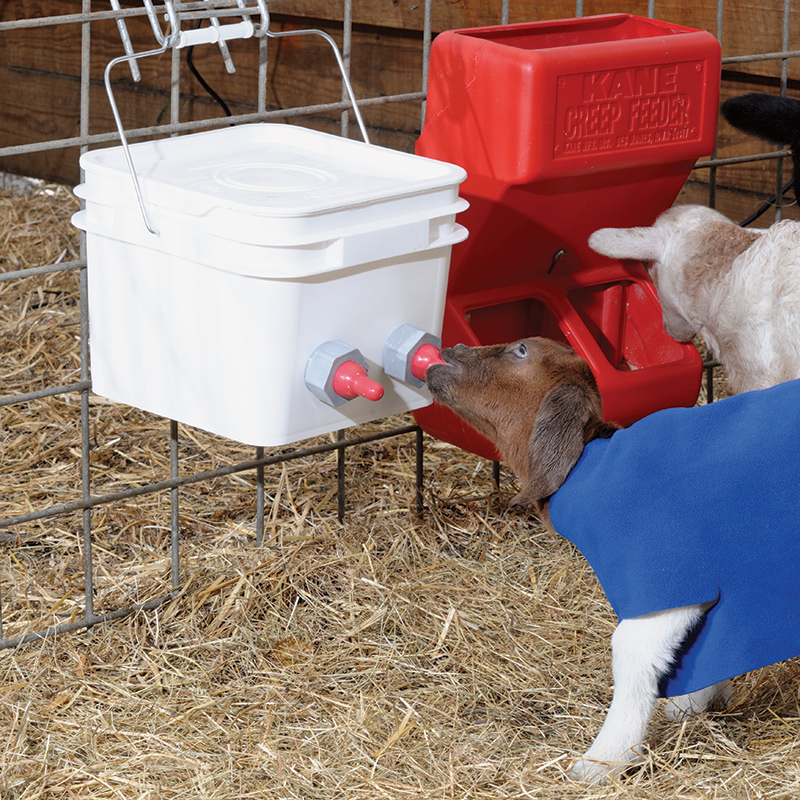
Credit: www.premier1supplies.com
Common Issues With Pvc Feeders And How To Troubleshoot
PVC feeders for goats may encounter common issues that require troubleshooting. These issues can include leaks, blockages, or damage to the feeder. To overcome these problems, regular maintenance, inspection, and repairs are needed to keep the PVC feeders functioning properly and ensuring that goats have access to food without interruption.
PVC feeders for goats offer several benefits, such as durability and ease of customization. However, like any equipment, they can present some common issues that may require troubleshooting. Let’s take a closer look at these problems and their solutions:
Clogging And Blockages
- Feed stored in PVC pipes can sometimes clog the system, preventing a smooth flow. Here’s how to troubleshoot this issue:
- Check for any obstructions in the pipes or feeding troughs and remove them.
- Ensure that the feed is dry and not excessively clumped, as this can cause blockages.
- Regularly clean the pipes and troughs to prevent the buildup of residual feed or debris.
Slippage And Feed Wastage
- Occasionally, goats may struggle to access the feed within PVC feeders due to slippage or excessive wastage. Follow these steps to troubleshoot this problem:
- Add texturing, such as sand or wire mesh liners, to the feeding troughs to enhance grip and reduce slippage.
- Modify the design of the feeding troughs to prevent feed from falling out easily, reducing wastage.
- Adjust the height of the feeders to ensure easy access for the goats, while still preventing them from climbing in and causing injuries.
Animals Getting Stuck Or Injured
- Although PVC feeders are generally safe for goats, there is a possibility of animals getting stuck or injured. Here are some troubleshooting methods to address this concern:
- Regularly inspect the feeders, looking for any sharp edges or protruding parts that could harm the goats. Sand down or modify these areas to eliminate potential hazards.
- Ensure that the dimensions of the feeders are suitable for the size and age of your goats, preventing them from getting stuck or trapped.
- Monitor the goats while they are accessing the feeders to identify any potential issues or risks. Make adjustments as necessary to ensure their safety.
By addressing these common issues and employing the appropriate troubleshooting techniques, you can ensure that your PVC feeders for goats function effectively and provide a reliable feeding solution for your animals. Remember to conduct regular maintenance and implement necessary modifications to keep your goats healthy and safe.
Other Factors To Consider For Goat Feeding Efficiency
Considering different factors for goat feeding efficiency, PVC feeders are an excellent option. These feeders provide durability, ease of cleaning, and reduced wastage, making them a practical choice for goat farmers.
Balanced Diet And Proper Nutrition:
- Goats require a balanced diet to maintain their health and productivity. Here are some key factors to consider for goat feeding efficiency:
- Variety of feed sources: Offer a diverse range of forages such as grass, legumes, and browse to ensure a balanced intake of nutrients.
- Adequate protein: Provide a feed with sufficient protein content, as goats need this nutrient for growth, milk production, and overall body maintenance.
- Mineral supplementation: Include minerals like salt, copper, selenium, and zinc to prevent deficiencies and maintain good health.
- Vitamin supplements: Based on your goat’s specific requirements, consider adding vitamins like vitamin A, D, and E to their diet.
Grazing Management And Supplementary Feeding:
- Managing your goat’s grazing activities and supplementing their feed can greatly contribute to their overall feeding efficiency. Consider the following tips:
- Rotational grazing: Implement a rotational system where goats graze on different areas periodically. This approach ensures adequate forage availability and promotes pasture regrowth.
- Seasonal variations: Adjust the feeding strategy based on seasonal changes in pasture quality and availability. During dry periods, supplement with hay or other stored forages.
- Feed quality assessment: Regularly assess the nutritional quality of your goat’s feed to determine if supplementation is necessary. This can be done through forage analysis or working with a livestock nutritionist.
- Balanced supplementary feed: Provide supplementary feed that complements the deficiencies in the available pasture, while meeting the nutritional needs of the goats.
Regular Monitoring Of Feed Intake And Body Condition:
- Monitoring your goat’s feed intake and body condition is essential for their health and performance. Here’s what you should do:
- Observe eating habits: Keep an eye on your goats’ eating patterns and ensure they are consuming enough feed. This helps identify any potential issues early on.
- Body condition scoring: Regularly assess your goats’ body condition to ensure they are not under or overfed. Adjust the feeding regimen accordingly.
- Weight tracking: Monitor your goats’ weight to track their growth and make necessary adjustments to their feed amounts and nutrient requirements.
- Health check-ups: Regularly check your goats for signs of ill-health, including changes in appetite, droppings, or physical appearance. Address any health issues promptly.
Remember, maintaining a balanced diet, proper nutrition, managing grazing activities, and monitoring feed intake and body condition are critical for the overall feeding efficiency and well-being of your goats. By implementing these factors, you can optimize your goat feeding practices and ensure the health and productivity of your herd.
Frequently Asked Questions Of Pvc Feeders For Goats
What Is The Best Feeder For Goats?
The best feeder for goats is a sturdy and easily accessible one. It should be able to hold enough feed for all the goats in the herd and have compartments to prevent them from fighting over food. A good option is a trough feeder, which allows multiple goats to feed at the same time.
Additionally, a feeder with adjustable height can accommodate goats of different sizes. It is also important to choose a feeder that is easy to clean and maintain. Avoid feeders with sharp edges or small openings that can cause injury or trap the goats.
Overall, a well-designed and functional feeder will ensure that the goats have access to feed whenever they need it, leading to healthy and productive animals.
How Do You Make A Self Feeder For Goats?
To make a self feeder for goats, start by selecting a sturdy container or barrel. Cut a small opening at the bottom for the feed to dispense, making sure it’s big enough for the goats to access but not so large that they can waste feed.
Attach the container securely to a fence or wall at the goats’ shoulder height using sturdy brackets or hooks. Fill the container with feed, ensuring it does not overflow. Regularly monitor and adjust the amount of feed to avoid overfeeding or wastage.
This homemade self feeder provides a convenient and efficient feeding solution for your goats. Remember to clean the feeder regularly to maintain proper hygiene.
How Do You Make A Mineral Feeder For Goats?
To make a mineral feeder for goats: 1. Start by selecting a sturdy container, like a bucket or trough. 2. Make small holes near the bottom of the container using a drill. 3. Attach a cover or lid to protect the minerals from debris and moisture.
4. Hang or secure the feeder in a safe and accessible location for the goats. 5. Fill the container with mineral mix suitable for goats’ nutritional needs. 6. Monitor the feeder regularly to ensure it stays filled and provide fresh minerals as needed.
7. Place the feeder away from feeding areas to encourage goats to use it. 8. Clean the feeder periodically to remove dirt and prevent contamination. 9. Regularly check the minerals’ composition to meet the specific needs of your goats. 10.
Ensure the feeder is at a height that goats can easily access without difficulty. By following these steps, you can make an effective mineral feeder for your goats.
What Are The Different Types Of Goat Feeders?
There are several types of goat feeders available, each with their own advantages and suitability for different needs. The most common types include: 1. Trough feeders: These are long, narrow containers where goats can access their feed. They are easy to clean and refill.
2. Hay racks: These feeders are designed to hold hay and prevent goats from wasting it. They usually have bars or small openings for goats to pull hay from. 3. Hanging feeders: These feeders are suspended from a fence or wall and can be adjusted to different heights.
They are helpful in preventing goats from soiling their feed. 4. Automatic feeders: These feeders use sensors or timers to dispense pre-set amounts of feed at regular intervals. They are convenient for busy goat owners. 5. Free-choice feeders: These are open or accessible containers that allow goats to eat as much feed as they want throughout the day.
Remember to choose a feeder that suits your goat’s specific feeding habits and provides easy access to clean and fresh feed.
Conclusion
To sum up, PVC feeders are a practical and cost-effective solution for goat owners. With their durability, ease of cleaning, and ability to prevent wastage, these feeders offer numerous benefits for both the goats and their caretakers. By providing a more efficient feeding system, PVC feeders contribute to the overall health and well-being of the goats, ensuring they receive the nutrition they need to thrive.
Additionally, the customizable design of PVC feeders allows for easy adaptation and modification to meet specific herd size and feeding requirements. Implementing PVC feeders not only streamlines the feeding process but also saves time and resources in the long run.
Whether you have a small backyard herd or a larger commercial operation, considering PVC feeders as part of your goat management strategy is definitely worth exploring.

